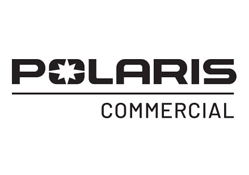Comprehensive Guide to Best Electric Pallet Jack Specifications and Operational Tips
 In today's fast-paced logistics and warehousing environments, the efficiency and effectiveness of material handling equipment can significantly impact operational productivity. One such vital equipment is the Electric Pallet Jack, designed to streamline the process of moving heavy loads with ease. As industries increasingly turn towards automation and technology to enhance their workflows, understanding the specifications and operational tips for electric pallet jacks becomes essential for businesses looking to optimize their operations. This comprehensive guide will delve into the best electric pallet jack specifications, highlighting key features and performance metrics that users should consider before making a purchase. Additionally, we will explore top strategies for effectively utilizing electric pallet jacks, ensuring that you can maximize their potential while minimizing risks and downtime. Whether you're a warehouse manager or a logistics professional, this guide will equip you with the knowledge to make informed decisions and improve your material handling processes.
In today's fast-paced logistics and warehousing environments, the efficiency and effectiveness of material handling equipment can significantly impact operational productivity. One such vital equipment is the Electric Pallet Jack, designed to streamline the process of moving heavy loads with ease. As industries increasingly turn towards automation and technology to enhance their workflows, understanding the specifications and operational tips for electric pallet jacks becomes essential for businesses looking to optimize their operations. This comprehensive guide will delve into the best electric pallet jack specifications, highlighting key features and performance metrics that users should consider before making a purchase. Additionally, we will explore top strategies for effectively utilizing electric pallet jacks, ensuring that you can maximize their potential while minimizing risks and downtime. Whether you're a warehouse manager or a logistics professional, this guide will equip you with the knowledge to make informed decisions and improve your material handling processes.
Types of Electric Pallet Jacks and Their Unique Features
Electric pallet jacks are essential tools in the growing e-commerce sector, playing a significant role in the efficient handling of goods in warehouses and distribution centers. There are various types of electric pallet jacks available, each designed to meet unique operational requirements. For instance, the walkie type is ideal for short distances and smaller loads, while the ride-on models enhance operator comfort and efficiency for heavier loads over longer distances.

According to market forecasts, the global pallet truck market is set to experience robust growth, expected to reach USD 85.18 million by 2035, with a Compound Annual Growth Rate (CAGR) of 6.9% from 2025 onwards. This expansion is driven by increasing automation and the need for more efficient material handling solutions amid a booming online retail landscape. Similarly, the electric forklift market is projected to grow significantly, with estimates showing a CAGR of 14.4%, highlighting the rising demand for electric solutions in the logistics and supply chain sectors.
These trends reflect a broader shift in the industry towards sustainability and enhanced operational efficiency, underscoring the importance of understanding the distinctive features of various electric pallet jacks in optimizing material handling operations.
Key Specifications to Consider When Choosing an Electric Pallet Jack
When selecting an electric pallet jack, several key specifications are essential to consider to ensure optimal performance and safety. According to a recent report by MarketResearchFuture, the global electric pallet jack market is projected to grow at a CAGR of 5.2% through 2025, underlining the increasing demand for efficient material handling solutions in various industries. Factors such as load capacity, battery life, and maneuverability significantly influence the effectiveness of electric pallet jacks in warehouse operations.
Load capacity is one of the most critical specifications, with most electric pallet jacks capable of handling between 2,200 to 5,500 pounds. It's crucial to choose a model that matches the specific needs of your business, as overloading can lead to equipment failure and safety hazards. Additionally, battery life and charging time are vital, with high-performance models offering up to 8 hours of operational time on a single charge. This performance is particularly advantageous in high-demand environments, allowing for seamless operations without frequent downtime. Ensuring that the electric pallet jack has adequate maneuverability, particularly in tight spaces, will also enhance productivity, as noted in a 2022 report by the International Journal of Logistics Management. Investing in the right specifications will lead to improved efficiency and safety in your warehouse processes.
Comprehensive Guide to Best Electric Pallet Jack Specifications and Operational Tips
| Specification | Description | Value |
|---|---|---|
| Load Capacity | Maximum weight the pallet jack can handle | 5000 lbs (2268 kg) |
| Platform Size | Size of the loading platform | 48" x 27" |
| Fork Length | Length of the forks | 42 inches |
| Lift Height | Maximum height the forks can reach | 7.5 inches |
| Battery Type | Type of battery used in the pallet jack | Lithium-Ion |
| Operating Time | Duration the pallet jack can operate on a full charge | 8 hours |
| Weight | Total weight of the pallet jack | 350 lbs (159 kg) |
| Turning Radius | Minimum radius for turning | 54 inches |
| Control Type | Type of controls for operation | Electric with ergonomic handle |
Ideal Applications for Different Electric Pallet Jack Models
When selecting an electric pallet jack, understanding the ideal applications for different models is crucial for maximizing efficiency and productivity. For instance, medium-duty electric pallet jacks are designed for warehouse operations, where they excel in transporting goods over short distances. These models typically feature a lift capacity of around 4,500 to 5,500 pounds, making them perfect for handling standard pallets loaded with merchandise. Their maneuverability in tight spaces and ease of operation make them an excellent choice for retail stockrooms or distribution centers.
On the other hand, heavy-duty electric pallet jacks are better suited for industrial environments, where the weight of the loads can be significantly higher. With capacities reaching up to 8,000 pounds, these robust machines are ideal for moving heavy materials in manufacturing plants or large warehouses. Additionally, some advanced models come equipped with enhanced stability features and larger forks, providing added security when lifting bulky items. Choosing the right electric pallet jack model based on specific operational needs not only improves workflow but also ensures the safety of your workforce.
Operational Tips for Maximizing Efficiency with Electric Pallet Jacks
When using electric pallet jacks, efficiency is key to optimizing warehouse operations. One effective tip is to always keep the work area organized. A cluttered space can slow down the movement of the pallet jack, increasing the time taken for each task. Ensure that pathways are clear and that goods are stored in designated areas, facilitating smoother navigation and reducing the risk of accidents.
Another crucial aspect to consider is the maintenance of the electric pallet jack. Regularly checking the battery, wheels, and forks not only extends the lifespan of the equipment but also ensures safe and efficient operation. Make a habit of charging the battery fully after each use and inspect the moving parts for any signs of wear or damage. This proactive approach will help prevent breakdowns during critical operations.
Additionally, training operators thoroughly on the controls and features of the pallet jack can significantly improve efficiency. Understanding the optimal speed settings and maneuvering techniques allows workers to handle loads more quickly and safely. Regular refresher courses can keep skills sharp and ensure that all staff are up-to-date with any new technology or best practices.
Safety Considerations and Best Practices for Operating Electric Pallet Jacks
When operating electric pallet jacks, safety should be the foremost consideration. According to the Occupational Safety and Health Administration (OSHA), more than 20,000 injuries involving forklifts occur every year in the United States alone, with many of these incidents caused by improper handling of equipment. To mitigate these risks, operators should undergo thorough training that includes understanding the jack's specifications, such as load capacity and maneuverability, as well as the specific environment in which they are working. Reports indicate that electric pallet jacks have a lifting capacity ranging from 2,200 to 5,500 pounds, making it crucial for operators to know their models’ limitations to avoid overload situations that can lead to tipping or equipment failure.
Best practices also involve conducting routine pre-operation inspections to ensure all components are functioning correctly. According to a study by the Industrial Truck Association, well-maintained equipment increases operational efficiency and reduces the likelihood of accidents. Operators should regularly check battery levels, inspect wheels, and ensure emergency brakes are functional. Furthermore, the use of personal protective equipment (PPE) like safety shoes and high-visibility vests can provide an additional layer of safety in busy warehouse environments. By following these guidelines and being mindful of the operational environment, operators can significantly reduce the risks associated with using electric pallet jacks.












